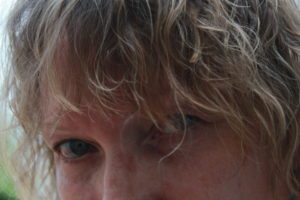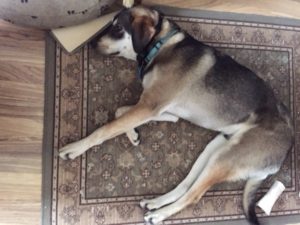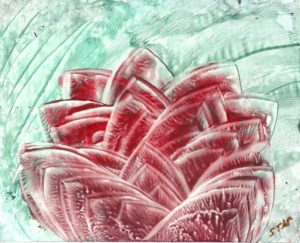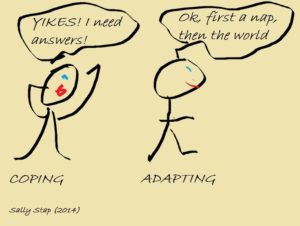I will start with a disclaimer. Some people recover fully from short term facial paralysis and return to a fully functioning face. However, there are many of “us” who continue to have issues. This is for us.
I thought I’d spend some time addressing common misconceptions about facial paralysis.
“Facial Paralysis Goes Away” – it doesn’t in many cases. There is some improvement at times, but not always. There are degrees of improvement and each person is different.
“Healing is a one-time thing” – Faces that have some recovery commonly continue to change for years.
“Facial Therapy is like lifting weights” – No. It isn’t. Facial therapy focuses on tiny movements. You can “bully” your biceps into being bigger by lifting weights, but there is no such thing with the face. Trying to smile when your face is paralyzed is not going to help. (Although it won’t stop us from trying when we look in the mirror) What is good is to focus on how the normal side feels and try to emulate that feeling and movement. (focus on what is working rather than what is not)
“It just comes back” – well, that is true for some people, and that is wonderful. However, for many it either doesn’t return to normal or returns partially with abnormalities (see next point)
“When it comes back, it will be back to the good old days” – No. While the brain is doing everything possible to get the face to move, commonly the fibers heal wrong. That causes Synkinesis, which is the result of mis-wiring. Picture a cable with many wires in it. If you cut it and then put it back together, think about how difficult it would be to line up each wire perfectly and match it with its prior other half. The odds are not good.
“Botox paralyses muscles, why would you do that to what little has healed?” – Botox can be very helpful to those with Synkinesis. Full paralysis of the face is more relaxed because there is no communication between the brain and the facial muscles. However, as the face begins to heal – the result of regeneration of the nerve from the point of injury to the ends – the brain is confused by Synkinesis. Spasms, tightness, and improper movements can be quite uncomfortable. (Heat also helps)
“Botox is a crutch” – for me, Botox was a reward of relief after months and months – years – of working through everything possible to figure out what was working, what was tightened in spasm, and what truly wasn’t working.
“Botox will retrain the brain” – Botox can do one of three things to your brain (or a combination).
1 – Allow the brain to take a break and forget improper movements. Ideally, it forgets and when the Botox wears off, the face is functioning more normally. (that is a lucky person).
2 – The brain is given a break, and over time will forget some improper movements because they haven’t been happening while deadened. (it does happen).
3 – I believe most commonly, (my opinion and experience) Botox will become a normal part of life. The location of each shot (many at a time) will change over time, but will continue to make significant improvement and relief.
“Anyone can do your Botox” – Botox should be done by a professional who is well trained in facial paralysis issues. It is not a beauty treatment. The goal is not to immobilize the good side of the face to match the placid side. It is to help the damaged side gain a balance between using what has healed correctly and minimizing what has healed incorrectly.
“At least you have no pain” – facial paralysis frequently included tightness, spasms, facial pain, and increased head pain.
“We don’t want pictures!” We do want to participate in capturing life’s precious moments. However, we want advance warning so we can position our face to avoid very odd snapshots that do happen.
I’ve gotten used to my crooked smile. No, I don’t like it, but it has helped me prioritize what is important in life. Because our faces typically move minimally in normal life, it isn’t always as noticeable as we see in our minds. The exception to that is the exaggerated huge smile that everyone has in pictures that we can no longer do. And that’s ok. Life is imperfect, right? Everyone has something. Facial paralysis just happens to be one of the more emotionally and socially difficult.
Go crooked smiles. . . and remember. . . When we smile internally, the beam is noticeable on the outside – Twinkling eyes, happy body language, half a smile that draws the eye. Facial paralysis is sometimes about what is working instead of what’s not.
Synkinesis is the result from miswiring of nerves after trauma. This result is manifested through involuntary muscular movements accompanying voluntary movements. For example, voluntary smiling will induce an involuntary contraction of the eye muscles causing the eye to squint when the subject smiles. (https://en.wikipedia.org/wiki/Synkinesis)









